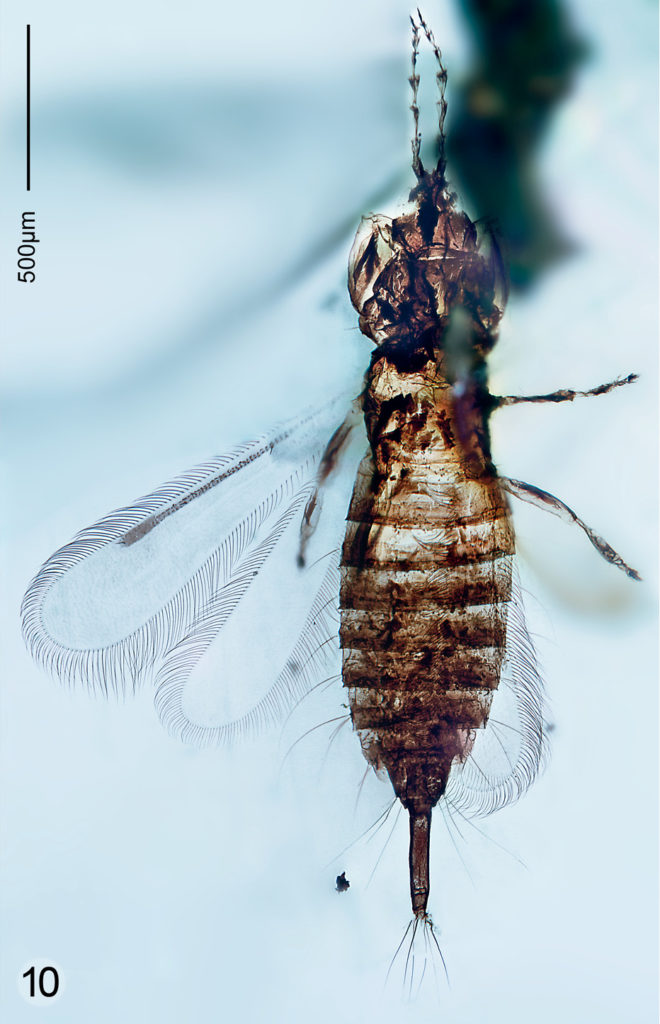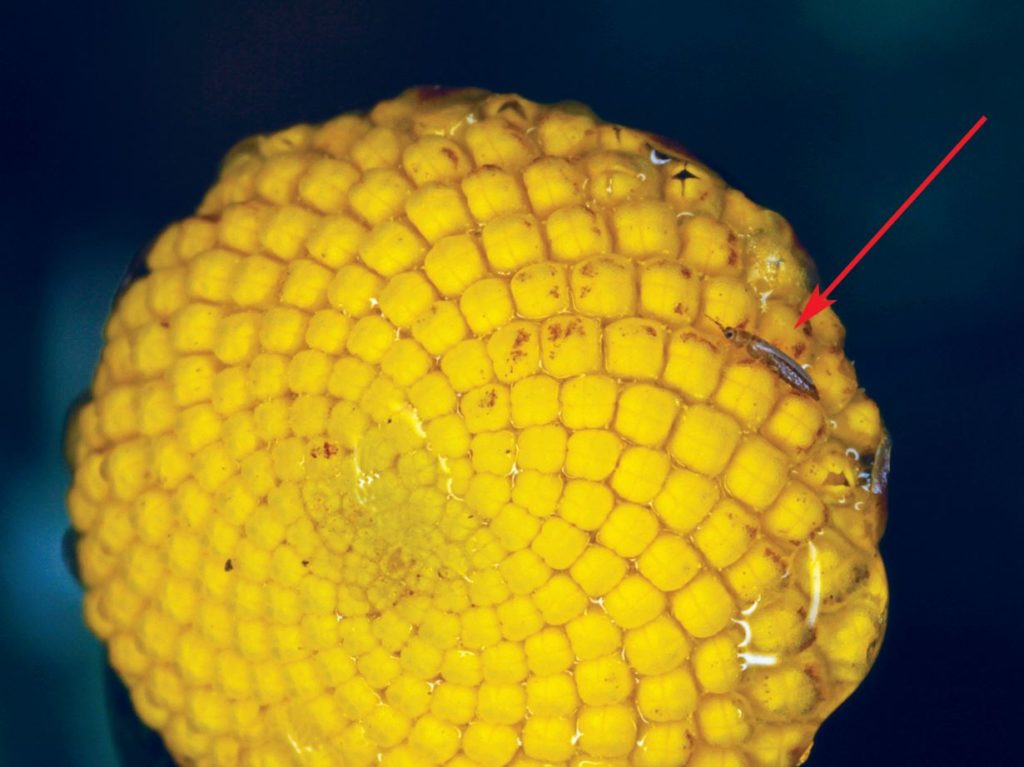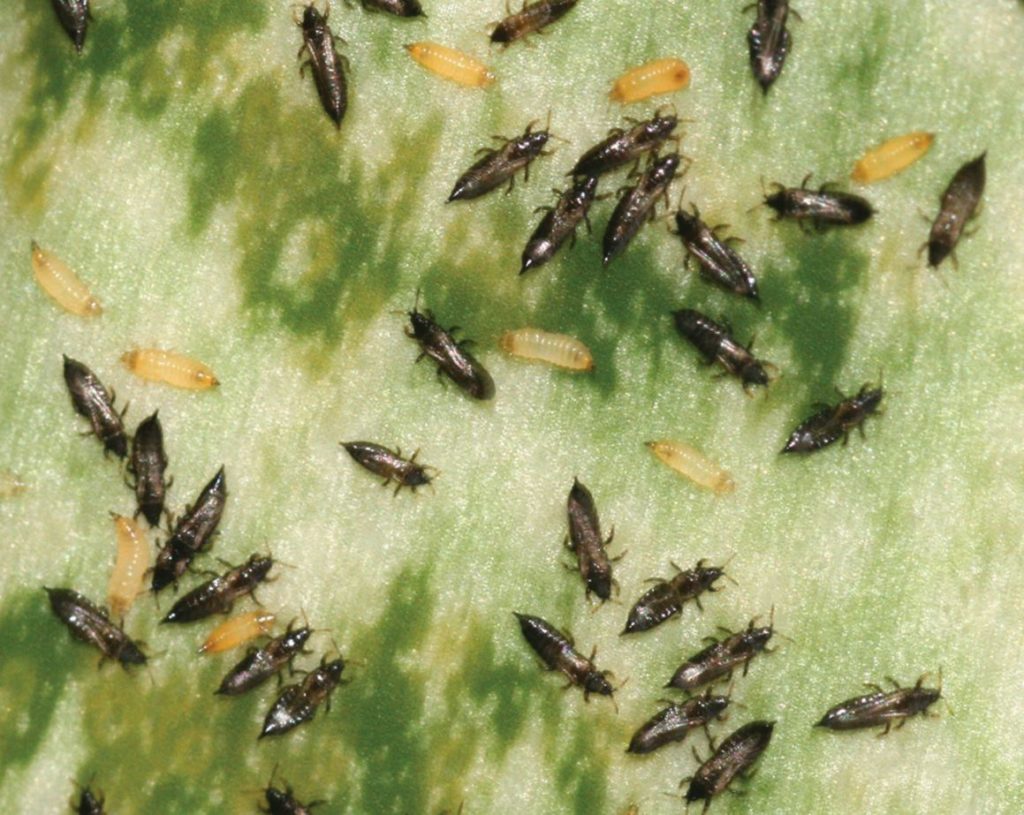Thrips
The thrips are probably most closely related to the Hemiptera, based on certain mouthpart structures and other characters.
Their minute size means that they are a little known group, and many people are surprised to learn how many species there are. Some feed on fungi, others on higher plants, and a small number of these can be agricultural or horticultural pests. Because of its ancient Greek origin, the name thrips is both singular and plural: there is no such word as ‘thrip’.
Most species are only 1-3 mm long, and some reach 7 mm, but their extremely narrow bodies make even the larger ones inconspicuous, though they can be present in huge numbers in favourable conditions. The wings are extremely narrow with a much reduced venation, and they carry fringes of long cilia. The antennae are slender and unmodified, and the eyes are usually well developed, though they are often reduced in size and complexity in wingless species.
 Rohrthrips schizovenatus Credit Manfred R. Ulitzka
Rohrthrips schizovenatus Credit Manfred R. UlitzkaThe mouthparts are perhaps the most remarkable because of their extreme modification, and they form a cone on the underside of the head. Only the left mandible is present; it is needle-like, and is used to perforate the host-plant to get access to the food source. The maxillae form narrow stylets that link together to form a tube, which is inserted into the hole made by the mandible so that liquid can be pumped up, often after saliva has been injected.
There are slight variations on this theme, because a few species feed on fungal spores, and others are predatory on small insects and mites, but the right mandible is always absent. Many species of thrips feed on fungi, but they are inconspicuous and often concealed from view under their host fungus, tree bark or leaf-litter. Others eat fungal spores whole, while some feed on leaves and these include most of the species that cause damage to plants, either by direct feeding in large numbers or by transmitting plant viruses.
 Small size of a typical thrips on a flower-head Credit Colin Rew
Small size of a typical thrips on a flower-head Credit Colin RewProbably the easiest group to find are the flower thrips, which can be numerous and easily visible when their dark bodies stand out against brightly coloured flowers. These feed on nectar, parts of the flower tissue and especially pollen grains; however, they are often covered in pollen and may help to pollinate some plant species, so their overall effect is not always clear. Some species are predators on very small insects and other arthropods such as mites, and this behaviour is sometimes seen among the flower thrips.
 Adults and nymphs of Suocerathrips linguis on Sanseveria trifasciata Credit PaulT
Adults and nymphs of Suocerathrips linguis on Sanseveria trifasciata Credit PaulT
Worldwide there are around 6,000 known species in 9 families; in Britain there are about 180 species in 3 families.
Identification help